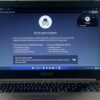Google explains fall detection, a technology poised to revolutionize personal safety. This comprehensive guide explores the various types of fall detection systems, from wearable sensors to smartphone-based solutions. We’ll delve into Google’s unique approach, examining the potential applications, AI integration, and user experience considerations. The impact on public health is also significant.
This exploration will cover the technical aspects, including algorithms, sensor data, and accuracy challenges. Safety and security, including data privacy, are crucial considerations. Finally, we’ll look at future trends and potential integration with other health applications.
Overview of Fall Detection Systems
Fall detection systems are rapidly evolving technologies designed to enhance safety and well-being, particularly for elderly individuals or those with mobility limitations. These systems utilize various sensor technologies and algorithms to recognize falls and promptly alert emergency contacts or caregivers. Their effectiveness in preventing injuries and ensuring timely assistance is substantial.Fall detection systems are increasingly sophisticated, providing a crucial safety net in environments where falls pose a significant risk.
These systems leverage a combination of sensor data analysis and predictive modeling to achieve high accuracy in fall detection.
Different Types of Fall Detection Systems
Fall detection systems are categorized into several types, each with its own strengths and weaknesses. Understanding these variations is key to choosing the most suitable solution for a given situation.
- Wearable Sensors: These devices, often in the form of smartwatches or fitness trackers, monitor movement patterns and detect sudden changes in acceleration or deceleration that could indicate a fall. They typically rely on accelerometer and gyroscope data to analyze the user’s activity and flag potentially dangerous events. Wearable sensors are popular due to their unobtrusive design and ease of use.
Their accuracy can vary depending on the specific model and user movement. For example, a sudden, intense physical activity other than a fall may trigger a false alarm, requiring careful calibration for optimal performance.
- Home-Based Systems: These systems, often integrated into smart home ecosystems, utilize a variety of sensors placed strategically throughout the home. Motion sensors, pressure sensors, or even video cameras can monitor the environment for unusual activity, such as a sudden drop in movement or a period of stillness that may indicate a fall. The placement of sensors in these systems is crucial to ensure comprehensive coverage and minimize false alarms.
An example of a home-based system could be one that monitors the movement of an elderly person in their bedroom and living room.
- Smartphone-Based Systems: Leveraging the built-in sensors of smartphones, these systems analyze the phone’s accelerometer and gyroscope data to detect falls. Smartphone-based systems offer a convenient and relatively inexpensive option, but their accuracy can be influenced by the phone’s position and surrounding conditions. A significant limitation is the need for the phone to be within range and in a position that allows the sensors to function effectively.
The phone’s battery life can also affect the system’s reliability.
Comparison of Fall Detection Methods
A comparative analysis of the strengths and weaknesses of various fall detection systems is presented below. This table highlights the key features, advantages, and limitations of each method.
| System Type | Features | Benefits | Limitations |
|---|---|---|---|
| Wearable Sensors | Small, lightweight, unobtrusive, continuous monitoring | Convenient, real-time alerts, potentially high accuracy with proper calibration, data integration with other health monitoring apps | Potential for false alarms due to vigorous activity, limited sensor range, dependence on user wearing the device consistently |
| Home-Based Systems | Extensive coverage, various sensor types (motion, pressure, video) | High accuracy in specific environments, comprehensive monitoring of the living space, reduced false alarms in controlled settings | Costlier installation, potential for complex setup and maintenance, limited mobility outside the home, dependence on power supply |
| Smartphone-Based Systems | Accessibility, affordability, ease of use | Cost-effective, readily available, convenience of existing technology | Accuracy varies greatly depending on phone position, potential for false alarms, limited coverage beyond the immediate vicinity of the phone, reliance on phone’s battery life |
Google’s Approach to Fall Detection
Google’s involvement in fall detection extends beyond simply offering a service. Their approach leverages the vast resources and expertise within their diverse technological ecosystem to develop comprehensive solutions with potential for significant societal impact. Their integration of AI and machine learning is key to creating accurate and adaptable fall detection systems, positioning them to revolutionize how we approach personal safety and healthcare.Google’s fall detection technology is not a standalone product but rather a potential component of a larger suite of services, designed to seamlessly integrate with existing platforms and enhance user experience.
This approach emphasizes practicality and usability, making the technology readily accessible to a wider audience and fostering a more proactive approach to personal well-being.
Potential Applications of Google’s Fall Detection Technology
Google’s fall detection technology has the potential to revolutionize various aspects of our lives. Its applications are diverse and far-reaching, encompassing both individual well-being and broader societal improvements.
- Smart Home Integration: Fall detection can be seamlessly integrated into smart home devices, enabling immediate alerts and support for elderly individuals or those with mobility challenges. For example, a connected smart thermostat could detect a fall and automatically call for emergency services or notify family members.
- Wearable Technology: Wearable devices equipped with fall detection sensors could alert emergency contacts or medical personnel in real-time, enabling rapid response to potential incidents. Imagine a smartwatch that not only tracks fitness but also detects a fall and automatically initiates an emergency call, potentially saving lives.
- Healthcare Monitoring: Integration with existing healthcare systems could provide valuable data on fall frequency and patterns. This data could be used to tailor interventions, monitor patient progress, and potentially prevent future falls. Early detection and proactive intervention can lead to improved patient outcomes and reduced healthcare costs.
- Public Safety Initiatives: In the future, fall detection technology could be deployed in public spaces, such as assisted living facilities or even parks, to improve safety and provide timely assistance to individuals experiencing falls.
Role of AI and Machine Learning in Google’s Fall Detection Systems
AI and machine learning play a crucial role in the accuracy and adaptability of Google’s fall detection systems. Sophisticated algorithms analyze various data points to identify fall patterns, distinguishing them from other movements or disturbances.
- Pattern Recognition: AI algorithms can learn to identify subtle patterns associated with falls, such as changes in motion or sudden drops in activity levels, even in noisy environments. This sophisticated pattern recognition allows the system to accurately distinguish falls from other movements.
- Adaptive Learning: Machine learning enables the system to adapt and improve its accuracy over time. The system learns from new data and adjusts its fall detection parameters, ensuring it remains reliable in diverse situations and individual movements.
- Contextual Awareness: Advanced AI can incorporate contextual information, such as the user’s activity level, location, and medical history, to further enhance fall detection accuracy. This context-aware approach ensures the system reacts appropriately to different situations.
Integration with Other Google Services
Google’s fall detection technology can be seamlessly integrated with other Google services, creating a holistic approach to user support.
- Google Assistant Integration: A fall detection system integrated with Google Assistant could automatically initiate a call to emergency contacts, play pre-recorded messages, or provide access to relevant medical information.
- Google Maps Integration: Location data from Google Maps can be used to determine the user’s location and alert emergency contacts or medical personnel of the fall’s occurrence and precise location.
- Health Records Integration: Integration with user health records could provide valuable information, including medical history, to improve the response time and accuracy of fall detection.
Potential Impact on Public Health
Google’s fall detection technology has the potential to significantly impact public health by improving early detection, reducing response times, and improving overall well-being. This technology could greatly reduce the risk of serious injuries and complications associated with falls.
- Reduced Injury Rates: Early detection and immediate response to falls can minimize the severity of injuries, potentially preventing serious complications and long-term health issues.
- Improved Quality of Life: Increased safety and timely assistance can enhance the quality of life for elderly individuals and those with mobility challenges, promoting independence and reducing isolation.
- Cost Savings: By preventing serious injuries and hospitalizations, fall detection technology can lead to significant cost savings in healthcare systems, potentially reducing the overall burden on healthcare resources.
User Experience and Interface Design: Google Explains Fall Detection

A user-friendly interface is crucial for any fall detection application. A well-designed interface can significantly impact the user’s experience and encourage consistent use, ultimately increasing the effectiveness of the system. A positive user experience not only improves the likelihood of a user complying with the system but also increases user satisfaction and confidence in the technology.Effective fall detection systems require more than just accurate sensor data; they need a user-friendly interface to ensure that users are comfortable, informed, and can utilize the system easily.
This focus on the user experience and interface design is critical to ensuring that fall detection applications are widely adopted and used effectively.
Notification System
The notification system is paramount in a fall detection application. A well-designed notification system should be clear, concise, and timely. Users should immediately understand what is happening, and the system should provide clear and unambiguous instructions. This is crucial for timely intervention and support, potentially preventing further harm. Users should be alerted to falls quickly and reliably.
False positives, while possible, should be minimized to maintain user confidence and reduce unnecessary alerts.
User Settings
Customizable settings empower users to tailor the fall detection system to their specific needs and preferences. This personalization is key to enhancing user experience and ensuring the system’s efficacy. A well-designed setting section should provide clear and concise options, enabling users to adjust the sensitivity, triggering mechanisms, and notification preferences.
Google’s explanation of fall detection is pretty cool, highlighting the tech’s potential for safety. Speaking of cool tech, hurry these PlayStation Plus monthly games are leaving soon! Check them out before they disappear. Ultimately, Google’s fall detection system seems like a smart and helpful addition to a variety of devices.
Accessibility
Accessibility is a vital consideration in fall detection systems. The system must be usable by individuals with diverse needs and abilities. This involves incorporating features such as adjustable font sizes, alternative text descriptions for images, and support for assistive technologies like screen readers. Users with vision impairments, hearing impairments, or motor impairments need to be able to use the system effectively.
Google’s explanation of fall detection is pretty interesting, but have you seen the new LG appliances? They just unveiled a stunning minimalistic fridge, washer, dryer, oven, and dishwasher at CES, showcasing sleek design and impressive tech. lg minimalistic fridge washer dryer oven dishwasher ces It’s a fascinating look at future home appliances, and I can’t help but wonder if this sort of integrated technology will someday be used in fall detection systems.
Hopefully, Google’s fall detection technology will continue to improve, making life safer and more convenient for everyone.
Accessibility ensures inclusivity and broadens the potential user base.
Key Elements of a User-Friendly Interface
| Interface Element | Description | Design Considerations |
|---|---|---|
| Notification System | Provides alerts to users regarding potential or detected falls. | Clear, concise, and timely notifications. Visual cues, audio alerts, and SMS/email options. Ability to adjust notification preferences (frequency, volume, etc.). Minimizing false positives. |
| User Settings | Allows users to customize the system to their individual needs. | Intuitive controls for adjusting sensitivity, triggering mechanisms (e.g., duration of inactivity), and notification preferences. Clear explanations for each setting. |
| Visual Feedback | Provides visual cues to users regarding the status of the system and any detected events. | Clear and consistent use of colors, icons, and symbols. Easy-to-understand graphical representations of sensor data. |
| Help and Support | Provides users with access to information and assistance. | Comprehensive FAQ section, readily accessible tutorials, and a support contact point. Clear explanation of the system’s functionality and potential limitations. |
Technical Aspects of Fall Detection

Fall detection systems rely heavily on sophisticated algorithms and precise sensor data to identify potentially life-saving events. This intricate interplay of technology requires careful consideration of accuracy, sensitivity, and the myriad challenges inherent in recognizing falls within real-world scenarios. Understanding these technical aspects is crucial for evaluating the effectiveness and reliability of such systems.
Fall Detection Algorithms
Various algorithms are employed in fall detection systems, each with its strengths and weaknesses. The choice of algorithm often depends on the specific application and the type of sensor data available. These algorithms analyze patterns in sensor data to distinguish between normal activities and fall events. They are designed to minimize false positives and ensure timely alerts.
Google’s recent explanation of fall detection is pretty cool, isn’t it? It’s fascinating how tech is evolving to help us stay safe. Speaking of staying safe and saving money, check out the buy more save more sale at vera bradley. Their bags are amazing, and this sale is definitely worth checking out. The technology behind fall detection is impressive, and I’m excited to see how it continues to improve.
- Machine Learning Algorithms: Machine learning (ML) algorithms are increasingly popular for fall detection due to their ability to learn from large datasets and adapt to individual user behavior. These algorithms can identify subtle patterns indicative of a fall, potentially improving the accuracy of fall detection compared to rule-based methods. Examples include support vector machines (SVMs), decision trees, and random forests.
- Rule-Based Algorithms: These algorithms rely on pre-defined rules based on sensor data characteristics. While simpler to implement, they might struggle to account for variations in user behavior and environmental factors. For example, a rule might trigger an alert if the acceleration surpasses a certain threshold and the device is stationary for a brief duration.
- Statistical Analysis: Statistical analysis techniques, like time series analysis, can be employed to identify unusual patterns in sensor data. These methods can help detect deviations from typical user activity, potentially signaling a fall. For example, analyzing the frequency and amplitude of accelerometer readings can highlight sudden and significant changes characteristic of a fall.
Sensor Data Role
Sensor data is the foundation of fall detection systems. The accuracy of fall detection hinges on the quality and reliability of the data collected. Different types of sensors provide different information about the user’s movement and posture.
- Accelerometers: These sensors measure acceleration changes in multiple axes. They are crucial for detecting sudden changes in velocity, which are often associated with a fall. The magnitude and direction of acceleration changes are analyzed by the algorithms to identify a fall event.
- Gyroscopes: These sensors measure angular velocity, providing information about the rotation of the device. This information can help differentiate between falls and other movements. The rate of rotation changes can be a critical factor in fall detection.
- Other Sensors (e.g., pressure sensors): In some advanced systems, other sensors, such as pressure sensors, are used to gather more comprehensive information about the user’s posture and movement. Combining data from multiple sensors can significantly improve the accuracy of fall detection.
Challenges in Fall Detection
Accurate fall detection is challenging due to several factors. Variations in user movements, environmental conditions, and sensor noise can lead to false positives and negatives.
- False Positives: A false positive occurs when the system incorrectly identifies a fall event. This can be caused by activities like coughing, sneezing, or bumping into objects. Minimizing these false positives is crucial for maintaining user comfort and avoiding unnecessary alerts.
- False Negatives: A false negative occurs when the system fails to detect a fall event. This is a critical concern, as it can lead to delays in receiving help for the individual who has fallen.
- Environmental Factors: External factors like vibrations or movements in the environment can affect sensor readings, potentially causing false positives. Adaptive algorithms are needed to account for these factors.
Comparison of Algorithms, Google explains fall detection
Different algorithms have different strengths and weaknesses when it comes to fall detection.
| Algorithm | Accuracy | Sensitivity | Description |
|---|---|---|---|
| Machine Learning (SVM) | High | High | Learns patterns from data to identify falls; often robust to variations in user movement. |
| Rule-Based | Moderate | Moderate | Relies on pre-defined thresholds; less adaptable to diverse user behavior. |
| Statistical Analysis (Time Series) | Medium | Medium | Identifies deviations from typical user activity; less sensitive to specific fall patterns. |
Future Trends in Fall Detection
The landscape of fall detection is rapidly evolving, driven by advancements in technology and a growing awareness of the need for proactive health support. This evolution promises to enhance safety, improve independence, and potentially revolutionize how we approach senior care and personal well-being. The future of fall detection hinges on seamless integration with other health monitoring tools, leveraging wearable technology, and the transformative potential of artificial intelligence.
Potential Future Developments in Fall Detection Technology
The evolution of fall detection technology is marked by a constant pursuit of accuracy, user-friendliness, and cost-effectiveness. Future systems are likely to incorporate more sophisticated sensor technologies, such as advanced accelerometers and gyroscopes, that can distinguish between falls and other movements with greater precision. Improved algorithms will likely analyze data streams in real-time, making the fall detection process quicker and more responsive.
This will translate to faster response times in case of a fall, ultimately improving the safety and well-being of individuals at risk.
Integration of Fall Detection with Other Health and Wellness Applications
The future of fall detection extends beyond simply identifying a fall. Future systems will likely integrate with other health and wellness applications. This integration will enable comprehensive health monitoring. For example, a fall detection system could automatically alert a care provider if a fall is detected, but also provide vital information about the user’s heart rate, blood pressure, and other relevant health metrics.
This proactive approach will empower users with more personalized health management. Such data-driven insights could be used to predict potential health risks and trigger timely interventions.
Role of Wearable Technology in Fall Detection
Wearable technology is poised to play a pivotal role in fall detection. Smaller, more discreet devices, integrated into clothing or accessories, can monitor vital movements and provide continuous fall detection. This continuous monitoring enables more immediate response to potentially hazardous situations, improving safety and promoting independence. Smartwatches, fitness trackers, and even specialized clothing could feature integrated sensors that track motion patterns and provide real-time alerts in case of a fall.
The miniaturization and increased affordability of these technologies will make them increasingly accessible to the broader population.
Potential Impact of Advancements in AI on Fall Detection
Artificial intelligence (AI) is poised to significantly impact the accuracy and efficiency of fall detection. AI algorithms can analyze complex movement patterns and distinguish between a fall and other activities with high accuracy. This analysis can include evaluating the duration, force, and direction of a fall to assess the severity and potential need for assistance. AI’s ability to learn and adapt to individual movement patterns further refines the precision of fall detection, minimizing false alarms.
The integration of AI allows for the development of personalized fall detection systems, which cater to individual needs and risk factors.
Summary of the Future Direction of Fall Detection
The future of fall detection promises a more comprehensive and proactive approach to personal safety. This future direction involves the development of highly accurate, responsive, and discreet systems. Integration with other health monitoring tools will enable more comprehensive health management, while wearable technology will enhance accessibility and continuous monitoring. Advancements in AI will further refine fall detection, minimizing false alarms and enabling personalized interventions.
This evolution will ultimately lead to improved safety, greater independence, and a better quality of life for individuals at risk of falls.
Final Summary
Google’s involvement in fall detection promises a future where personal safety is enhanced through innovative technology. This analysis underscores the intricate interplay of technology, user experience, and security in shaping the effectiveness of these systems. We’ve examined the various components, from initial detection methods to future advancements. The potential for improved public health outcomes is substantial, making this a critical area of technological advancement.




